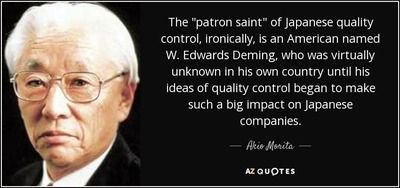
Introduction
In today's fast-paced and highly competitive business environment, the concept of quality control has become an indispensable aspect of every organization. It is a systematic approach that aims to prevent defects caused by human errors from occurring, ensuring that products and services meet or exceed customer expectations. By instilling a culture of quality control consciousness, companies can not only save substantial resources but also enhance their reputation and customer satisfaction. This article delves into the significance of defect prevention, the role of corporate culture in fostering openness to mistakes, and the importance of asking the right questions to calmly analyze and rectify errors.
Recognizing the Importance of Defect Prevention
The adage "prevention is better than cure" holds true in the world of quality control. In traditional manufacturing or service-oriented processes, the focus used to be on detecting defects after they occurred and then rectifying them. This approach often resulted in wasted time, effort, and resources, leading to compromised customer satisfaction. However, modern quality control emphasizes identifying and eliminating the root causes of defects before they manifest.
Preventing defects at the source involves carefully assessing processes and systems to identify potential areas of weakness and vulnerability. By employing techniques like Failure Mode and Effects Analysis (FMEA), organizations can systematically evaluate the potential risks associated with each step of their operations. This proactive approach enables the implementation of preventive measures that minimize the likelihood of errors.
Furthermore, the cost of correcting a defect after its occurrence is significantly higher than preventing it in the first place. Quality control consciousness among employees fosters a sense of responsibility towards their work, encouraging them to pay attention to detail and take pride in delivering defect-free products and services.
A Corporate Culture that Encourages Openness to Mistakes
Creating a corporate culture that allows employees to make mistakes openly without fear of repercussions is crucial in promoting quality control consciousness. In traditional settings, making a mistake was often viewed negatively, leading to blame-shifting and cover-ups. This approach stifles innovation and hampers the learning process within the organization.
In contrast, a culture that embraces errors as learning opportunities fosters continuous improvement and growth. Employees are more likely to take risks and think outside the box when they know that their mistakes will be treated constructively. This open culture encourages the reporting of errors, even the minor ones, enabling the organization to address issues before they escalate into more significant problems.
Leadership plays a pivotal role in nurturing such a culture. When leaders exhibit a willingness to admit their mistakes and take responsibility for them, it sets a precedent for the rest of the workforce. Encouraging employees to share their experiences and lessons learned from mistakes during team meetings or training sessions reinforces the notion that errors are stepping stones to improvement.
Asking the Right Questions for Calm Analysis of Mistakes
The way an organization responds to mistakes is equally important as their prevention. Rather than reacting emotionally to errors, a quality-conscious workplace focuses on a systematic and analytical approach to understanding their root causes. This involves asking the right questions to gather relevant information and insights.
Instead of pointing fingers, the emphasis should be on understanding what went wrong, why it happened, and how to prevent its recurrence. Using techniques like the "5 Whys," employees can dig deep into the causes of a mistake by iteratively asking "why" multiple times until they reach the underlying issue.
Encouraging cross-functional collaboration during the analysis process can yield diverse perspectives and innovative solutions. Moreover, documenting the analysis and lessons learned facilitates knowledge sharing and prevents similar mistakes in the future.
Conclusion
Quality control consciousness is a powerful force that drives organizations towards defect prevention and continuous improvement. Recognizing the importance of defect prevention, fostering a culture that embraces mistakes openly, and asking the right questions during analysis are essential pillars in promoting a workplace committed to excellence.
By prioritizing quality control, organizations not only reduce costs associated with defects but also enhance their reputation and customer loyalty. A workforce that embraces quality consciousness will continuously strive to innovate, meet customer expectations, and exceed industry standards, leading to long-term success and sustainability in today's competitive landscape.





